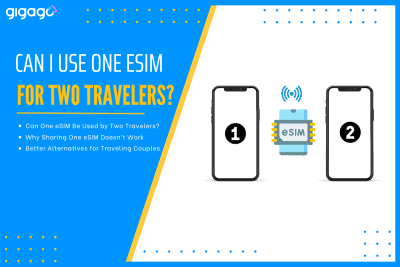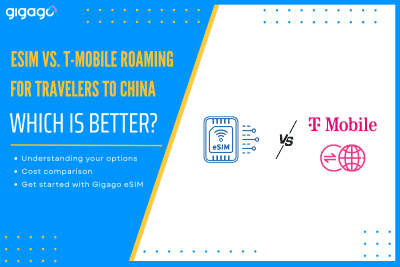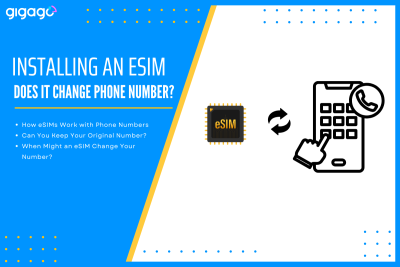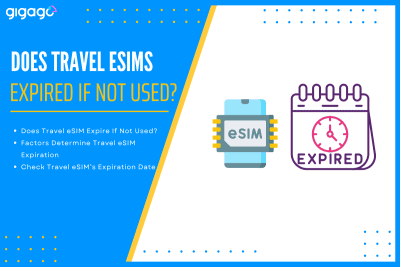When couples or friends travel together, it’s common to look for ways to save on mobile data. One question often comes up: “Can two travelers use the same eSIM?” The short answer is no – one eSIM cannot be used by two different travelers on two separate devices. However, there are practical alternatives that can […]
eSIM or pSIM: which is better?
The debate between eSIM or pSIM continues to shape modern mobile connectivity. Both technologies offer distinct advantages in the current digital landscape, with eSIM providing enhanced security and digital management while physical SIM cards deliver traditional flexibility. Understanding their key differences helps users make informed decisions based on device compatibility, travel requirements, and personal preferences.
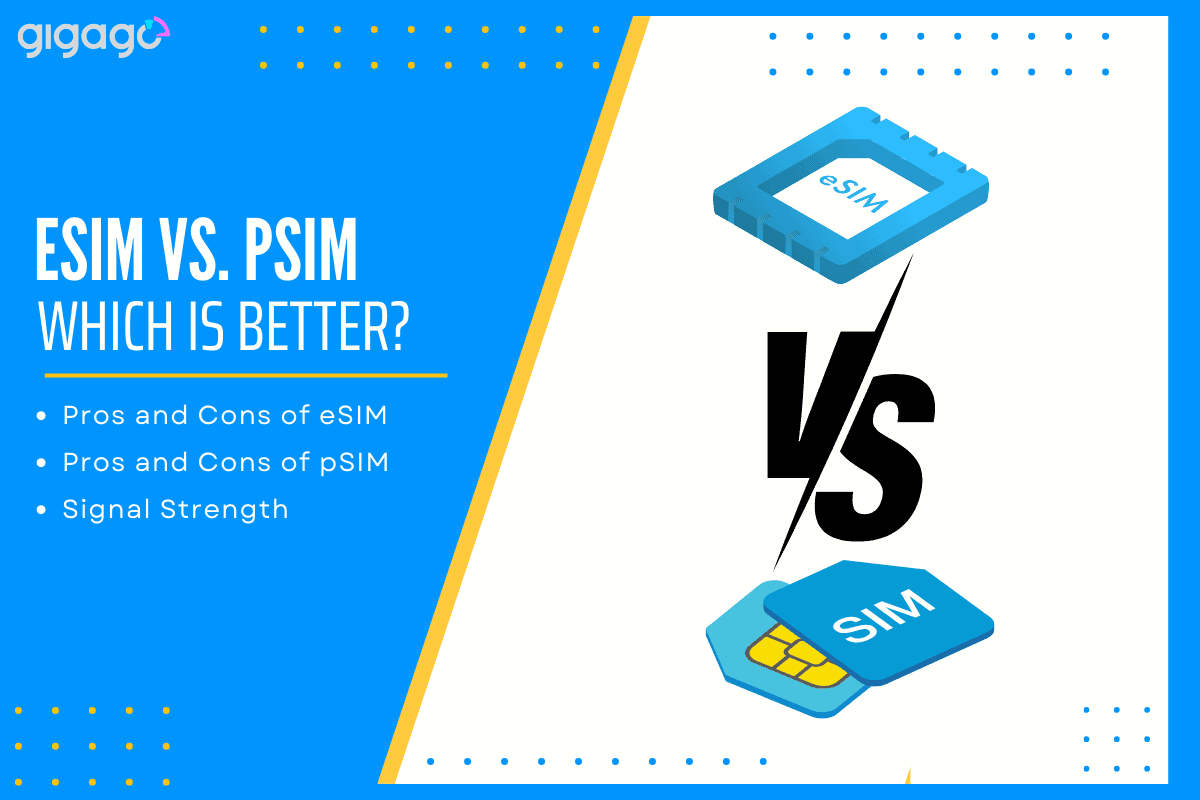
In this article
I. What is the difference between physical SIM and eSIM?
A physical SIM is a small, removable plastic card that connects your phone to mobile networks. You need to insert this card into your phone manually using a SIM tool, and might wait several days for delivery when ordering a new one.
An eSIM is a digital SIM built into your phone. It lets you activate mobile plans instantly through online download, without needing physical cards. Many new phones now come with an eSIM-only design, removing the physical SIM slot completely.
Both types provide the same network quality and speed, but differ in use. Physical SIMs require manual handling and switching, while eSIMs enable quick network changes through simple online steps or phone calls. You can change carriers instantly with eSIM instead of waiting for a new card to arrive.
II. Pros and Cons of eSIM
There are several reasons why eSIM is becoming more popular. Below are a few reasons why you might want to consider getting an eSIM-compatible device or wireless plan:
Benefits of eSIM:
- Multiple phone numbers: One eSIM can store up to 5 different numbers, making it easy to manage both personal and business lines on a single device.
- Quick activation: Switching carriers takes just minutes through online activation, eliminating the need to wait for and handle physical SIM cards.
- Enhanced security: The built-in design prevents theft and copying. Integrated security features provide better protection than traditional SIMs.
- Testing convenience: Users can easily try new carriers while maintaining their current plan, making service comparison simple.
- Better device recovery: Since thieves cannot remove an embedded eSIM, tracking lost devices becomes more effective.
Limitations of eSIM:
- Network restrictions: Not all carriers support eSIM yet, particularly smaller providers. However, support is steadily growing.
- Device compatibility: Many older phones lack eSIM support. Even newer eSIM-enabled phones may not work with all networks.
- Phone transfer process: Moving service to a new phone requires digital setup and app installation, more complex than simply switching physical SIM cards.
III. Pros and Cons of Physical SIM
While eSIM technology grows, physical SIM cards remain widely used. Here’s a balanced look at their strengths and weaknesses in today’s mobile world.
Benefits of Physical SIM
Physical SIM cards offer straightforward device switching – simply move the card from one phone to another to maintain your service. This traditional approach works reliably across most phones and networks worldwide. Their widespread support makes physical SIMs highly accessible, especially in areas where eSIM technology hasn’t fully reached.
Many users appreciate having a tangible SIM card they can physically control and transfer between devices. This familiar technology works with most phones available today, from basic models to advanced smartphones, making it a practical choice for many users.
Limitations of Physical SIM
The main drawback of physical SIM cards lies in their vulnerability. These small chips can be lost, damaged, or stolen, potentially disrupting your mobile service. When switching networks, users must wait for a new physical card to arrive or visit a store, taking more time than digital eSIM activation.
Physical SIMs also require careful handling during installation and removal. Their small size makes them easy to misplace, and the SIM tray can be damaged if not handled properly. The manual swapping process, while simple, needs more physical effort than eSIM’s digital transfers.
IV. eSIM vs Physical SIM: Signal Strength
Signal strength remains consistent whether you use an eSIM or physical SIM (pSIM), as both technologies function identically for network connectivity. The primary factors affecting signal quality are environmental conditions like building structures, dense vegetation, and your device’s antenna capabilities – none of which are influenced by your choice of SIM type.
V. FAQs
Does my phone need to be unlocked to use eSIM?
Yes, your phone must be unlocked to use eSIM. When purchased from a carrier, phones are typically locked until fully paid off, preventing you from using eSIM to connect to other networks during this period.
Does eSIM have worse signal than physical SIM?
Signal strength depends on carrier coverage and device compatibility with frequency bands, not on whether you’re using an eSIM or physical SIM. Both provide the same level of network connectivity.
Does eSIM drain battery?
An eSIM alone doesn’t consume more battery than a physical SIM. However, if you’re using dual SIM functionality (both eSIM and physical SIM), maintaining two network connections simultaneously may drain your battery faster.
Does eSIM slow down your phone?
eSIM has no impact on internet speeds or cellular reception quality – it’s simply a digital version of your physical SIM card functioning in the same way.
